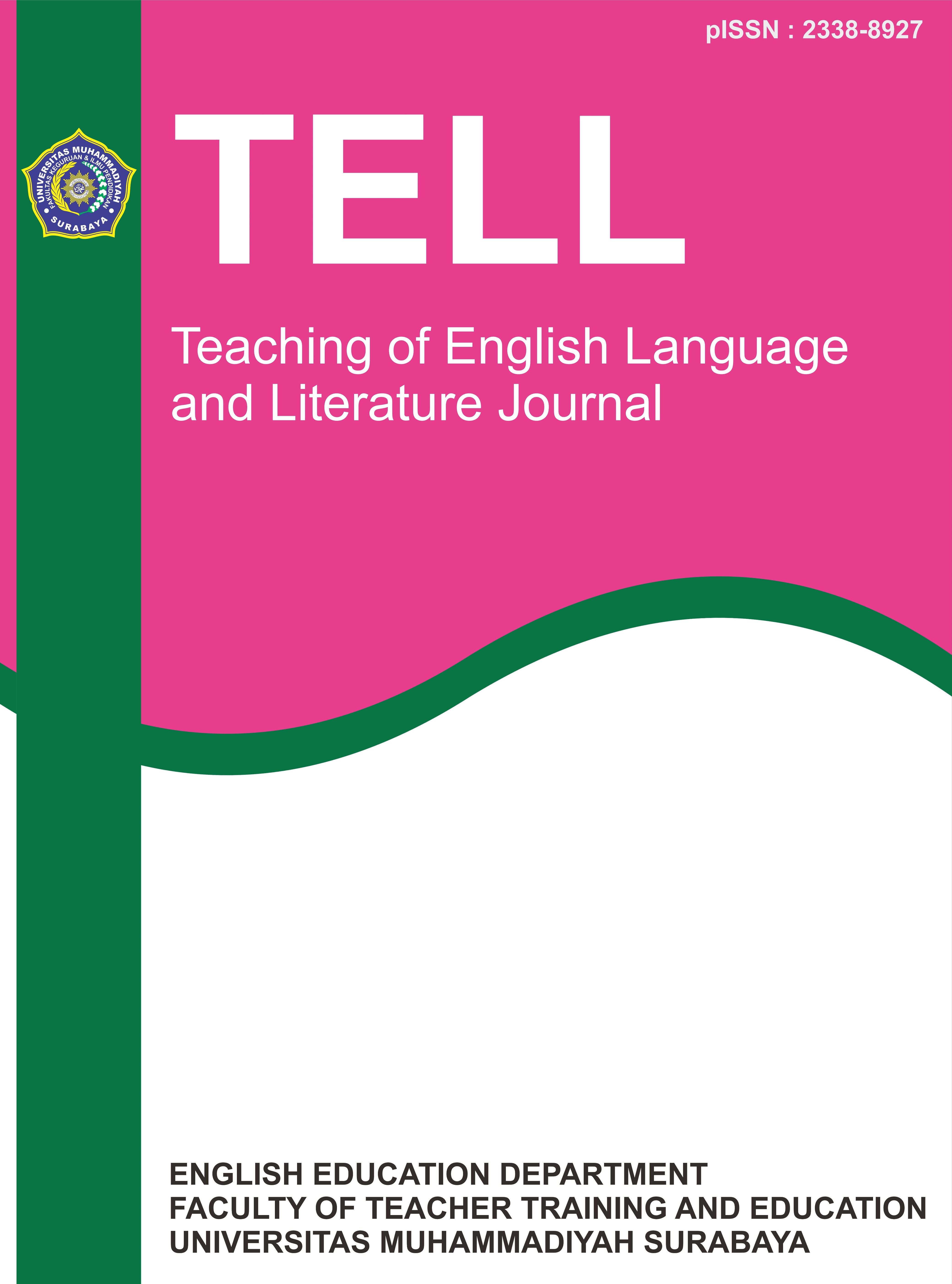Multiliteracy in English Department Universitas Muhammadiyah Sidoarjo
Abstract
Full text article
References
Arikunto, S., (2006). Prosedur Penelitian Suatu Pendekatan Praktik. Jakarta: Rineka Cipta.
Borsheim, Calin, Kelly Merrit, & Dawn Reed.(2008). Beyond Technology for Technology’s Sake: Advancing Multiliteracies in the Twenty First Century in The Clearing House
Bogdan, R.C. And S. K. Biklen. (2006). Qualitative Research for Education An Introduction to Theory and Methods Fifth Edition. New York: Pearson
Coughlan, Samantha. (2008). Advocating for the Arts in an Age of Multiliteracies in Language Arts, 86,2 www.proquest.umi.pqd/web
Edlesky, C. (2006). With Literacy and Justice for All: Rethinking the Social in Language and Education (3rd ed). Mahwah, NJ: Erlbaum.
Fairclaugh, N. (1989). Language and Power.New York: Longman
Faizah, Dwi Utama, dkk, Panduan Gerakan Literasi Sekolah di Sekolah Dasar. (Jakarta:Direktorat Jenderal Pendidikan Dasar dan Menengah Kementrian Pendidikan dan Kebdayaan, (2016).
Graham, Meadow Sherril, Sheila Benson, Lisa Storm Fink. (2010). A Springboard Rather Than a Bridge. Diving into Multimodal Literacy. In English Journal (High School Edition) Urbana: November, vol 200, 153.
Gee, J. (1992). The Social Mind: Language, Ideology, and Social Practice. New York: Begin & Garvey
Hasset, Dawnene D., and Jen Scoot Curwood. (2009). Theories and Practice of Multimodal Education: The Instructional Dynamics of Picture Book and Primary Classroom in The Reading Teachers 63,4. International Reading Association.
Kress, G. (2003). Literacy in the New Era. London: Routledge
Moleong, J Lexy. (2016). Metodologi Penelitian Kualitatif. Bandung: Remaja Rosdakarya
Morocco, C.C., et al. (2008). Supported Literacy for Adolescents: Transforming Teaching and Content Learning for the Twenty First Century. San Fransisco: Jossey-Bass A Wiley Imprint
New London Group. (1996). A Pedagogy of Multiliteracies: Designing Social Feature. Harvard Education Review, 66.
Olge, D. et al. (2007). Building Literacy in Social Studies: Startegies for Improving Comprehension and Critical Thinking. Alexandria: ASCD
Sugiyono. (2008). Metode Penelitian Kuantitatif, Kualitatif, dan R&D. Bandung: Alfabeta
Vasquez, V. (2003). Getting Beyond “I like the Bookâ€: Creating Space for Critical Literacy in K-6 Classrooms. New York, DE: international Reading Association.
Vygotsky, L. (1986). Though and Language. Cambridge, MA: MIT Press. York: Bergin & Garvey.
William, Bronwyn T. (2008). Tomorrow will not be like today: Literacy and Identity in a World of Multiliteracies.International Reading Association.
Authors
Copyright (c) 2019 Tell : Teaching of English Language and Literature Journal

This work is licensed under a Creative Commons Attribution-NonCommercial 4.0 International License.
Authors keep the copyright to their work. However, by publishing in this journal, they grant the journal the right to publish it first.
The published article is licensed under a Creative Commons Attribution-NonCommercial 4.0 License .
This means others can use, share, and adapt the work for non-commercial purposes, as long as they credit the author and the journal.
Authors can share the published article elsewhere (for example, in a university repository or in a book), as long as they clearly state that the article was first published in this journal.
Authors are encouraged to share early versions of their work (such as preprints) on their personal websites or institutional repositories, even before or during the submission process, as it can lead to productive exchanges, as well as earlier and greater citation of published work.

